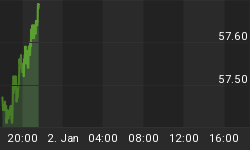ZeroHedge had an interesting set of charts of BLS data in his post Number Of Workers Aged 25-54 Back To April 1997 Levels.
I picked up on that theme and put together this chart of BLS data showing various age groups.
Demographic Points of Note
- Employment in age group 25-54 is 94,063,000
- Employment in age group 25-54 was 94,167,000 in April 1997
- Total employment is 143,257,000
- Total employment was 143,449,000 in February 2006
- The low employment for age group 25-54 was 93,356,000 in October 2011, 28 months after the recovery began
- Total employment at the start of the recovery in June 2009 was 140,074,000
- Age 55 and up employment at the start of the recovery was 27,105,000
- Age 25-54 employment at the start of the recovery was 95,264,000
- Age 55 and up employment is now 31,119,000
- Age 25-54 employment is now 94,063,000
Reflections on the Recovery
- Since the start of the recovery, the economy added 3,183,000 total jobs
- Since the start of the recovery, the economy added 4,014,000 jobs in age group 55+
- Since the start of the recovery, the economy lost 831,000 jobs of those between 16-54
- Since the start of the recovery, the economy lost 1,201,000 jobs of those between 25-54
Boomer demographics certainly explains "some" of this trend.
For the rest of the trend, consider my comment in today's job report: Establishment Survey +146,000; Household Survey -122,000 Jobs; Unemployment 7.7% as Labor Force Shrinks by 350,000
In the last year, the civilian noninstitutional population rose by 3,733,000. Yet the labor force only rose by 1,354,000.
Those "not" in the labor force rose by 2,380,000 to 88,883,000.
The massive rise of those "not" in the labor force is primarily economic weakness, not demographics.
Actually, older workers are returning to the work force because they cannot afford retirement. One look at the average age of Walmart greeters and those working in fast food restaurants tells a story itself.
Flashback May, 1 2008
For point of record, consider what I said on May 1, 2008 in Demographics Of Jobless Claims
Ironically, older part-time workers remaining in or reentering the labor force will be cheaper to hire in many cases than younger workers. The reason is Boomers 65 and older will be covered by Medicare (as long as it lasts) and will not require as many benefits as will younger workers, especially those with families. In effect, Boomers will be competing with their children and grandchildren for jobs that in many cases do not pay living wages.

















